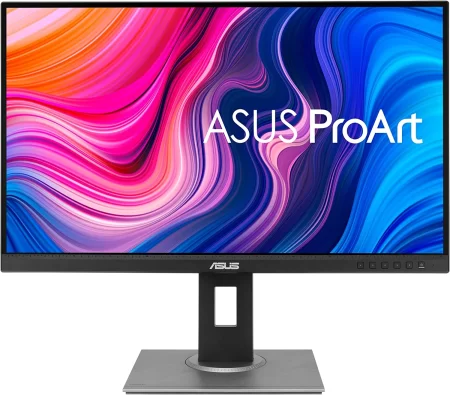Are you an architect looking for the best monitor to elevate your work? Look no further because today, we’ll dive into the monitors world and discover what makes the perfect display for architects.
Whether designing buildings, drafting blueprints, or creating 3D models, having a high-quality monitor can make all the difference in your workflow. So, let’s explore the top monitors for architects and find the one that fits your needs like a glove.
At a Glance:
- 10 Best monitor for architects
- 1. Dell Ultrasharp U2718Q
- 2. LG 27UN850-W
- 3. ASUS ProArt PA278QV
- 4. ViewSonic VP3268-4K
- 5. HP Z27
- 6. BenQ PD2700U
- 7. Acer ConceptD CP7271K
- 8. Philips Brilliance 329P9H
- 9. Samsung CJ89
- 10. NEC MultiSync PA311D
- Buying Guide: How to Choose best architect monitor
- Frequently Asked Questions
- Conclusion
10 Best monitor for architects
| Design | Best Monitor | Retailer |
|---|---|---|
Best Pick 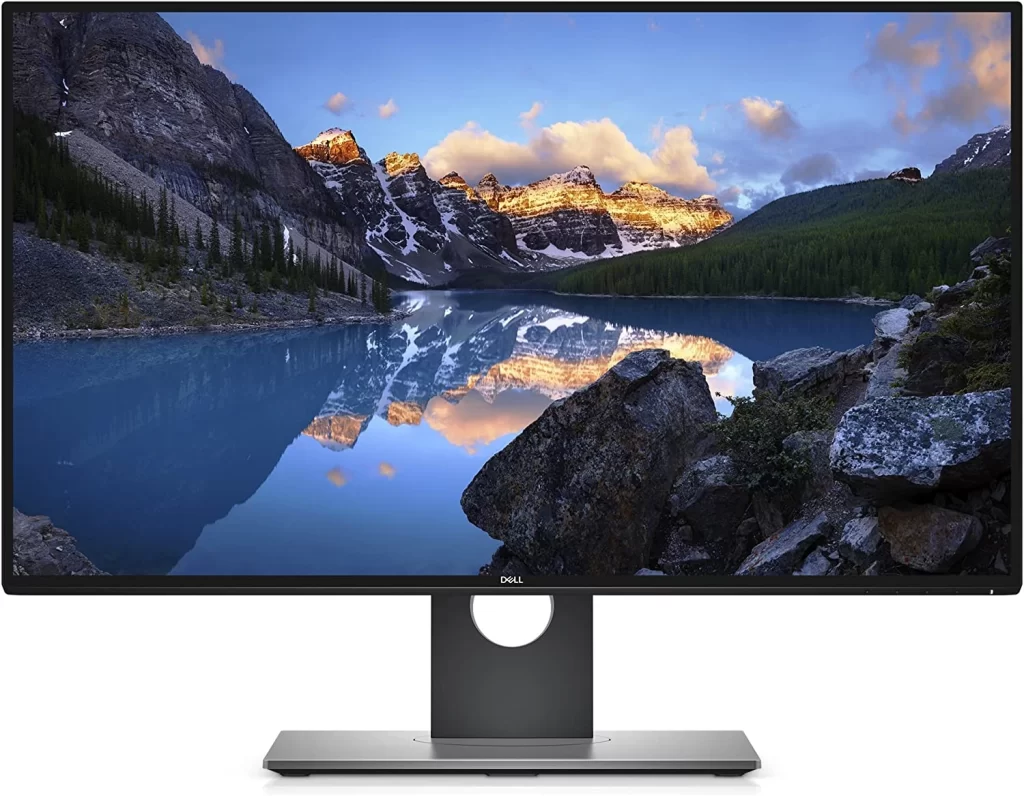 | Check Price | |
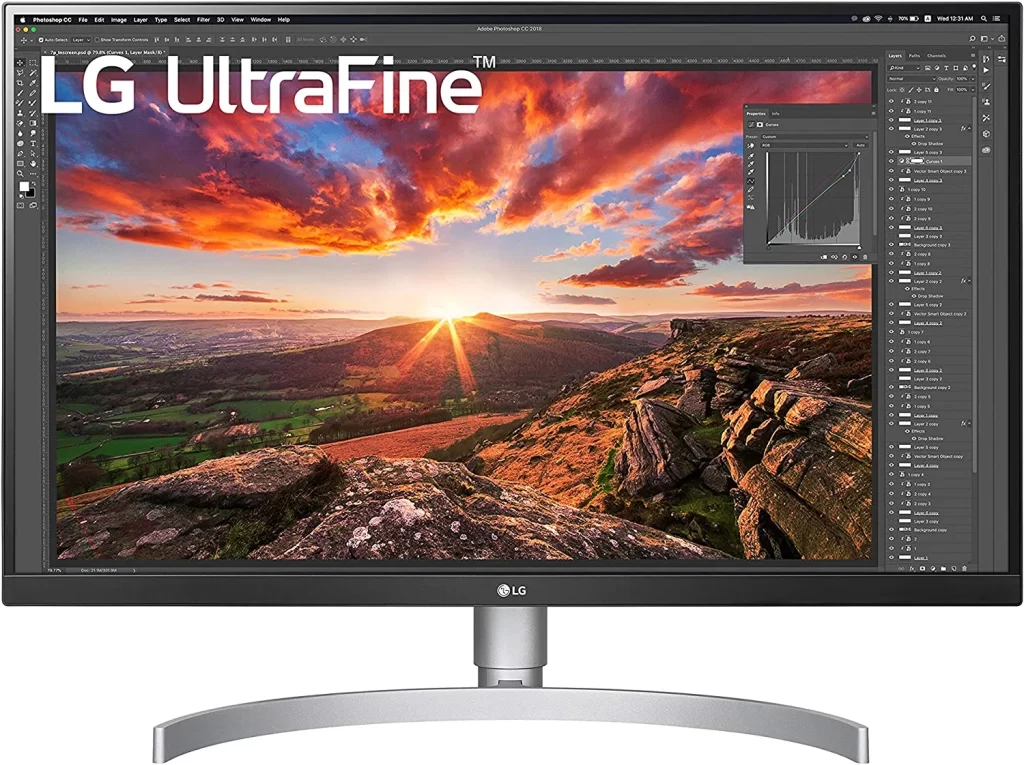 | Check Price | |
Staff Pick 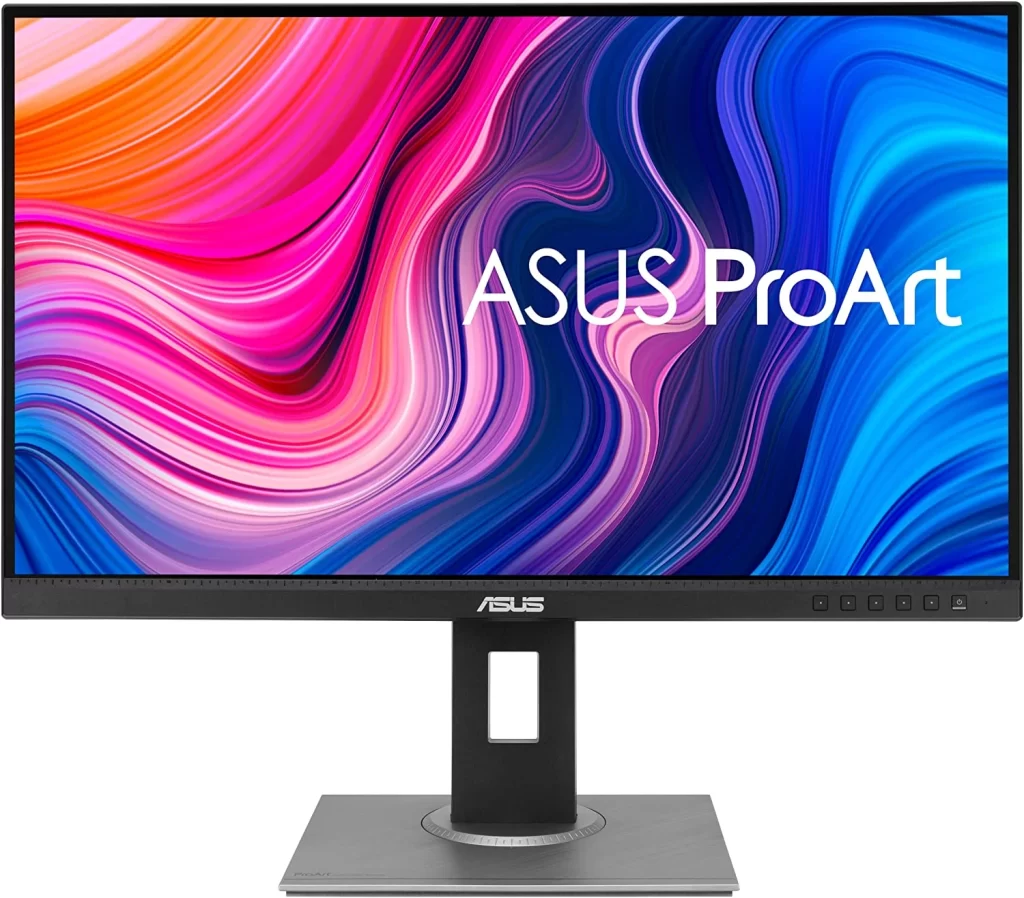 | Check Price | |
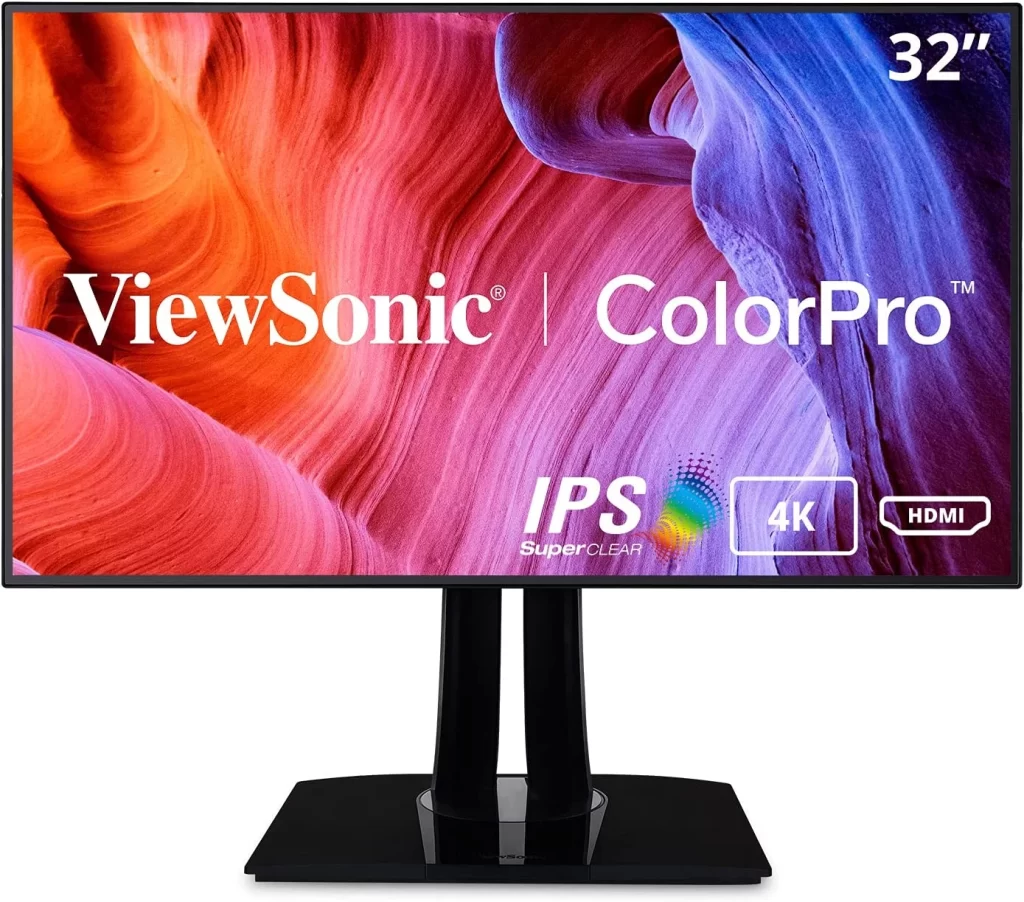 | Check Price | |
Budget Pick 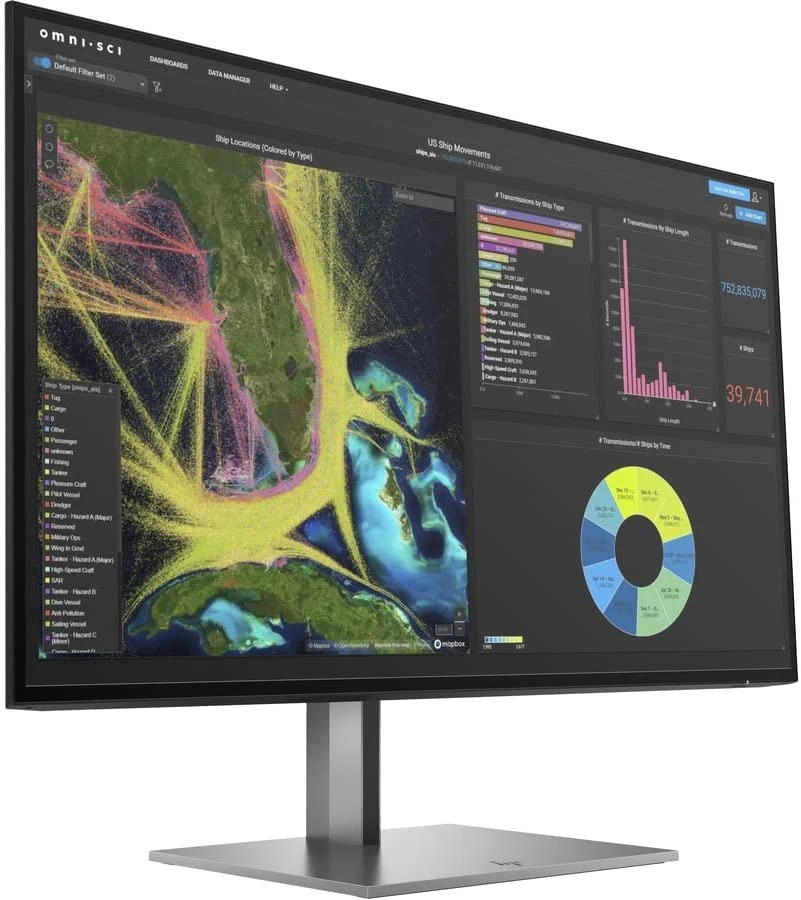 | Check Price | |
 | Check Price | |
Best Pick 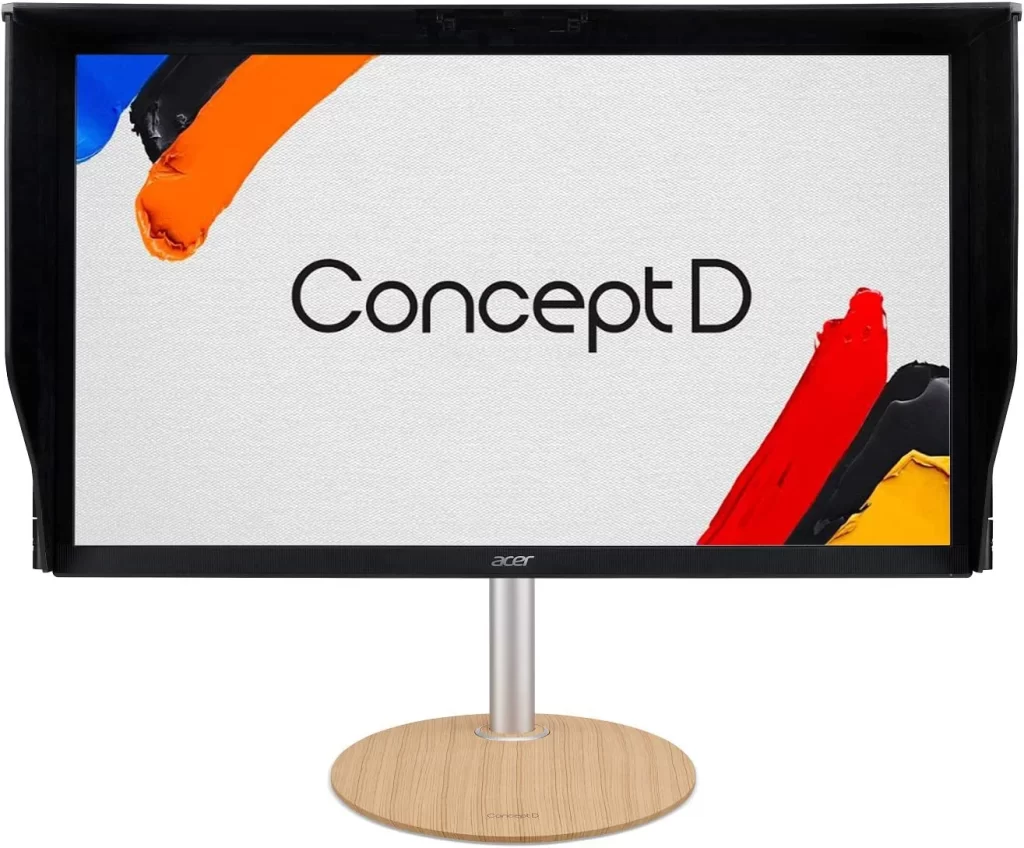 | Check Price | |
Best Pick 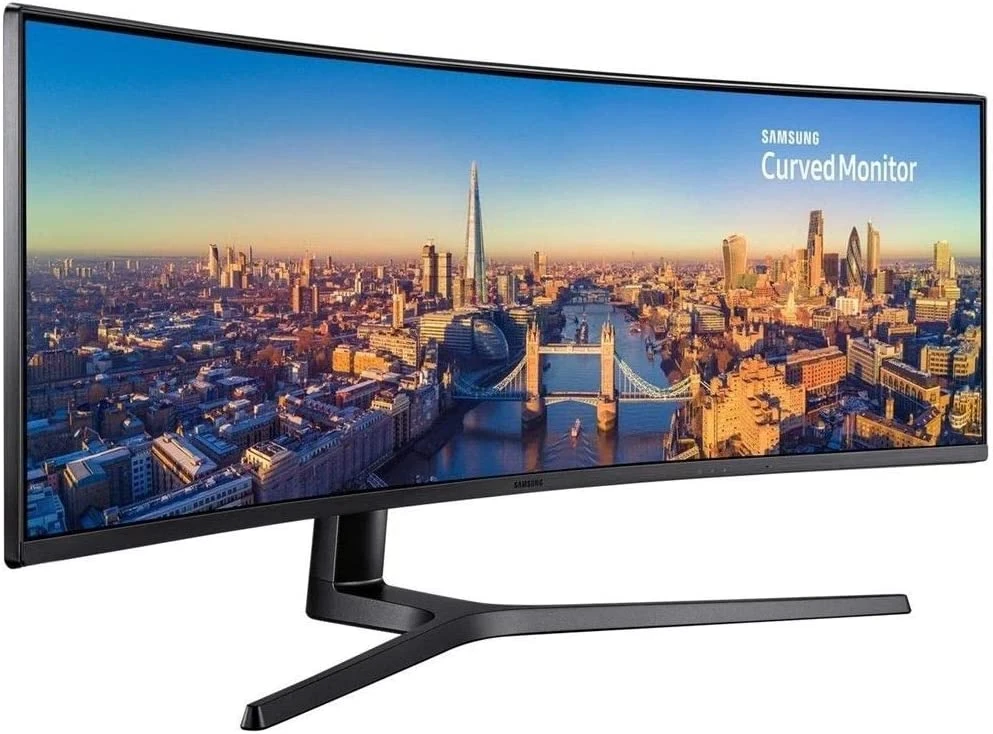 | Check Price | |
Best Pick 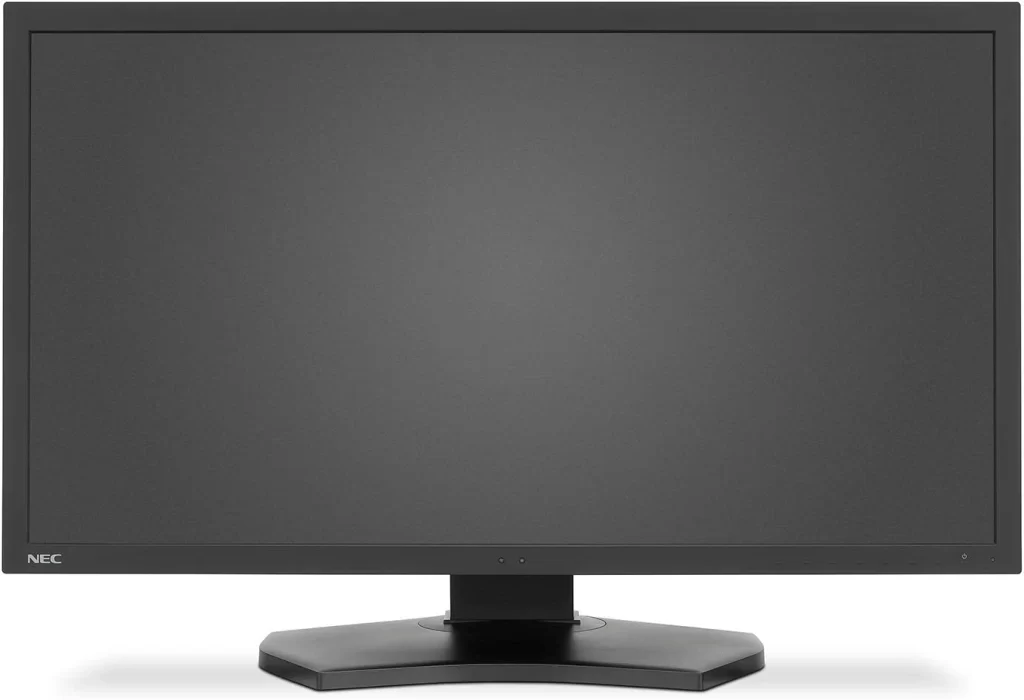 | Check Price |
1. Dell Ultrasharp U2718Q
Best Pick
| Specifications | Details |
| Screen size | 27 inches |
| Screen resolution | 3840 x 2160 pixels (4K) |
| 1.07 billion colors | 1.07 billion colours |
| Brightness | 350 cd/m² |
| Pixel pitch | 0.1554 mm x 0.1554 mm |
| Connectivity options | Dell Universal Pairing, Bluetooth 4.0, RF |
The Dell Ultrasharp U2718Q is a high-quality 27-inch 4K monitor with incredibly thin bezels, ideal for multiple monitor setups.
It has a sleek design looks great on any desk and provides a virtually seamless view, allowing users to hone in on every task.
One of the standout features of the Dell Ultrasharp U2718Q is its exceptional color accuracy and clarity, thanks to Dell HDR technology.
It combines greater depth of colors, remarkable clarity, and a high contrast range of shades to create strikingly realistic images. It is crucial for architects and designers who need to view their work accurately.
This monitor has a color support of 1.07 billion colors, meaning it can accurately display a vast range of colors. The brightness of 350 cd/m² ensures that images and videos appear vibrant and bright, while the pixel pitch of 0.1554 mm x 0.1554 mm provides sharp and clear images.
The Dell Ultrasharp U2718Q monitor is compatible with Dell Display Manager, a great multitasking feature.
The Easy Arrange feature allows users to tile and view applications side by side, making it easier to stay organized and tackle multiple tasks simultaneously.
One of the best things about this monitor is its connectivity options. Users can connect up to six compatible RF devices or Bluetooth 4.0 through Dell Universal Pairing, making it easy to switch between devices without unplugging cables or adapters.
Positive Balance:
The Dell Ultrasharp U2718Q monitor is an excellent choice for architects and designers who require exceptional details and ultimate efficiency.
It is 4K resolution and color accuracy make it perfect for viewing detailed plans and designs. The thin bezels and easily arranged features make it easy to use with multiple monitors, increasing productivity.
Negative Balance:
One downside to this monitor is that it could be more pricey than other monitors on the market. It may also not be the best choice for users who need to view their work from different angles, as it has limited adjustability.
Pros
- Exceptional color accuracy and clarity
- Thin bezels for a virtually seamless view
- Easy Arrange feature for multitasking
- Connectivity options with Dell Universal Pairing
- Dell Display Manager compatibility
- High-quality 4K resolution
Cons
- High price point
- Limited adjustability for viewing from different angles
2. LG 27UN850-W

| Specifications | Details |
| Screen size | 27 inches |
| Screen resolution | 3840 x 2160 pixels (4K) |
| Color support | 99% sRGB spectrum |
| Brightness | 400 nits |
| HDR compatibility | VESA DisplayHDR 400 |
| Sync technology | AMD FreeSync |
The LG 27UN850-W is a high-quality 27-inch 4K monitor with VESA DisplayHDR 400 high dynamic range compatibility, making it ideal for architects and designers who need to bring their work to life.
With 400 nits of brightness, the monitor elevates textures, elements, character movements, and natural light and shadow, providing an immersive viewing experience.
The monitor has a color support of 99% sRGB spectrum, making it an excellent solution for photographers, graphic designers, or anyone looking for highly accurate color representation.
The brightness of 400 nits ensures that images and videos appear vibrant and bright, while the 4K resolution provides sharp and clear images.
The LG 27UN850-W monitor features AMD FreeSync technology, which manages refresh rate, reducing screen tearing, flicker, and stuttering for an effortlessly smooth gaming experience.
It also has customized game modes, optimizing your gaming conditions with two first-person-shooter (FPS) modes and a real-time strategy (RTS) mode.
One of the standout features of this monitor is the ability to transform standard content into HDR-quality video right on the screen.
Using a picture quality algorithm, tone mapping and luminance of SDR content are improved for an HDR-like experience.
On-Screen Control is another great feature of the LG 27UN850-W monitor, allowing users to make screen adjustments with a few clicks of their mouse. It’s an incredibly convenient feature for architects and designers who must adjust their work quickly.
Positive Balance:
The LG 27UN850-W monitor is an excellent choice for architects and designers who require accurate color representation and high dynamic range compatibility.
It is 4K resolution and color accuracy make it perfect for viewing detailed plans and designs. The VESA DisplayHDR 400 compatibility provides an immersive viewing experience, while AMD FreeSync technology ensures a smooth gaming experience.
Negative Balance:
One downside to this monitor is that it doesn’t have the thinnest bezels, which may not be ideal for users who need to use it with multiple monitors. Additionally, there may be better choices for users needing a high refresh rate monitor.
Pros
- Accurate color representation with 99% sRGB spectrum
- VESA DisplayHDR 400 high dynamic range compatibility
- AMD FreeSync technology for a smooth gaming experience
- On-Screen Control for easy screen adjustments
- Customized game modes for optimized gaming conditions
- Ability to transform standard content into HDR-quality video
Cons
- Thicker bezels compared to other monitors on the market
- It may not be suitable for users who require a high refresh rate
3. ASUS ProArt PA278QV
Staff Pick
| Specification | Details |
| Size | 27 inches |
| Resolution | 2560 x 1440 |
| Color Gamut | 100% sRGB, 100% Rec. 709 |
| Color Accuracy | Delta E < 2 |
| Connectivity | Mini DisplayPort, DisplayPort, HDMI, dual-link DVI-D, audio in, earphone jack, 4x USB 3.0 |
| Stand Adjustments | Tilt, swivel, pivot, height adjustment |
The ASUS ProArt PA278QV is an excellent choice for professionals who require high color accuracy. It supports 100% sRGB and 100% Rec. 709 color gamuts, making it an ideal monitor for architects working with highly detailed images and CAD designs.
The monitor is also Calman Verified with factory calibration for excellent Delta E less than two color accuracy, which means you can trust the colors you see on the screen.
ASUS-exclusive ProArt Preset and ProArt Palette features allow users to adjust color parameters to their liking, and the monitor also supports a wide range of connectivity options, including Mini DisplayPort, DisplayPort, HDMI, dual-link DVI-D, audio in, earphone jack, and 4x USB 3.0 ports.
This flexibility makes connecting to multiple devices and peripherals easy, making it a highly versatile option for professionals.
The monitor also boasts an ergonomic stand with tilt, swivel, pivot, and height adjustments for a comfortable viewing experience, which can help reduce eye strain and neck pain.
The monitor is also VESA wall-mountable, which can help save desk space and provide additional workspace flexibility.
Overall, the ASUS ProArt PA278QV is a highly capable monitor with excellent color accuracy and flexibility, making it an ideal choice for architects, graphic designers, and photographers. However, the monitor does not support HDR, which may be a drawback for some users.
Pros
- Excellent color accuracy with 100% sRGB and 100% Rec. 709 color gamuts
- Calman Verified with factory calibration for excellent Delta E with less than two color accuracy
- ASUS-exclusive ProArt Preset and ProArt Palette features provide adjustable color parameters
- Extensive connectivity options including Mini DisplayPort, DisplayPort, HDMI, dual-link DVI-D, audio in, earphone jack, and 4x USB 3.0 ports
- Ergonomic stand with tilt, swivel, pivot, and height adjustments
- VESA wall-mountable
Cons
- No HDR support
4. ViewSonic VP3268-4K

| Specification | Value |
| Size | 32 inches |
| Resolution | 3840 x 2160 (Ultra 4K UHD) |
| Color accuracy | Delta E<2, 4.39 trillion colors, sRGB uniformity |
| Design | 4-sided frameless |
| Connectivity | HDMI 2.0, USB, DisplayPort, Mini DisplayPort |
| Calibration | Pre-calibrated with individual report |
One of the highlights of this monitor is its color accuracy. It has screen-wide sRGB color uniformity and Delta E<2 accuracy, which means that the colors displayed are precise and vivid.
Additionally, every unit is pre-calibrated at the factory. It comes with an individualized color calibration report, ensuring you can get the most out of your monitor.
The 4-sided frameless design creates a seamless visual experience when using multiple monitors, making it ideal for architects who need a multi-monitor setup.
It also has a full range of swivel, pivot, tilt, and height adjustments and a built-in G sensor that allows screen images to pivot automatically and fill the screen when positioned vertically, boosting your productivity.
The VP3268-4K also offers flexible connectivity options, with HDMI 2.0, USB, DisplayPort, and Mini DisplayPort inputs that support laptops, PCs, and Macs.
The box includes an LCD monitor, power cable, Mini DP to DP cable, HDMI 2.0 cable, USB 3.0 cable, and audio cable.
Pros
- Accurate and vivid colors with sRGB uniformity and Delta E<2 Accuracy
- Pre-calibrated at the factory and comes with an individualized color calibration report
- Seamless visual experience with a 4-sided frameless design
- Flexible connectivity options
- Full range of swivel, pivot, tilt, and height adjustments for a comfortable viewing experience
- Built-in G sensor for automatic screen image pivoting
5. HP Z27
Budget Pick
| Feature | Description |
| Screen size | 27 inches |
| Resolution | 3840 x 2160 (4K UHD) |
| Panel Type | IPS (In-Plane Switching) |
| Connectivity | HDMI, DisplayPort, USB 3.2, USB Type-C |
| Adjustable stand | Height, tilt, swivel, pivot |
| Special features | HP Eye Ease blue light filter, VESA mount compatible, energy star certified, USB hub |
As an architect, I require a high-quality monitor that can display detailed blueprints and designs with accurate color representation. The HP Z27K is an excellent choice that delivers crisp and vibrant visuals.
With a 27-inch UHD IPS screen and a 3840 x 2160 resolution, this monitor provides a near-frameless viewing experience that is easy on the eyes.
The display’s In-Plane Switching (IPS) technology ensures that colors remain consistent and vibrant across a wide viewing angle.
This feature is particularly useful when I have to show my work to clients and colleagues, as everyone can view the designs without color distortion or loss of image quality.
The HP Z27K also has a blue light filter that reduces eye strain and helps prevent digital eye fatigue. This is especially important when I have to work long hours on the monitor.
I love the monitor’s adjustability features, including height, tilt, swivel, and pivot. These make finding a comfortable viewing angle easy regardless of where I sit or stand.
Additionally, the VESA mount compatibility allows me to easily mount the monitor on the wall or a multi-monitor stand.
Connectivity options are abundant with HDMI, DisplayPort, USB 3.2, and USB Type-C ports. This means I can connect all my frequently-used devices directly to the monitor, saving me time and desk space.
One minor drawback of the HP Z27K is its price. It’s a bit expensive compared to other monitors with similar features, but it’s worth the investment for its exceptional visual quality and productivity-boosting features.
Pros
- High-quality display with accurate color representation
- In-Plane Switching (IPS) technology for consistent colors across wide viewing angles
- Blue light filter for reduced eye strain
- Adjustable stand for comfortable viewing
- VESA mount compatible with flexible placement options
- Ample connectivity options for easy device integration
Cons
- Pricey compared to other monitors with similar features
6. BenQ PD2700U

| Feature | Specification |
| Display Size | 27 inches |
| Resolution | 4K UHD (3840 x 2160 pixels) |
| Panel Technology | IPS |
| Color Accuracy | 100% REC.709, 100% sRGB, HDR10 |
| Eye-Care Technology | Flicker-Free, Low Blue Light, Brightness Intelligence |
| Auto Pivot | Yes |
The first thing that impressed me about the BenQ PD2700U is its stunning display. With a resolution of 4K UHD (3840 x 2160 pixels) and IPS panel technology, this monitor delivers crisp and clear visuals that are a pleasure to look at.
The color accuracy is also excellent, with 100% REC.709 and 100% sRGB coverage. The HDR10 support adds another level of visual clarity that’s especially useful for video editing and rendering.
One of the standout features of this monitor is its Eye-Care technology. The Flicker-Free, Low Blue Light, and Brightness Intelligence feature work together to reduce eye strain and provide a more comfortable viewing experience, even after long work hours.
The Auto Pivot function is a handy feature that automatically adjusts the screen orientation when you rotate the monitor.
The BenQ PD2700U comes with a manufacturer’s guarantee of three years, which is a testament to its build quality and durability.
The package includes a power cord, HDMI cable, USB cable, mDP to DP, manual/driver CD, DisplayPilot, and factory calibration protocol.
However, it’s important to note that this monitor is incompatible with MacBooks if it doesn’t have USB-C or TB3 ports.
Overall, I found the BenQ PD2700U to be an excellent monitor for architects and designers who need a high-quality display with exceptional color accuracy and eye-care features.
However, it has its drawbacks. The lack of compatibility with MacBook can be a dealbreaker for some, and the price point may be too steep for those on a tight budget.
Pros
- Stunning display with 4K UHD resolution and IPS panel technology
- Excellent color accuracy with 100% REC.709 and 100% sRGB coverage
- Eye-Care technology reduces eye strain and provides a more comfortable viewing experience
- Auto Pivot function automatically adjusts screen orientation
- Comes with a manufacturer’s guarantee of three years
Cons
- Not compatible with MacBook if it doesn’t have USB-C or TB3 ports
- The price point may be too steep for some
7. Acer ConceptD CP7271K
Best Pick
| Specification | Description |
| Screen size | 27 inches |
| Resolution | 3840 x 2160 pixels |
| Panel technology | IPS |
| Brightness | Up to 400 nits |
| Refresh rate | 120Hz (overclocking to 144Hz) |
| Response time | 1ms (VRB) |
One of the most impressive features of the Acer ConceptD CP7271K is its Pantone validation. It has been rigorously tested to ensure accurate and consistent colors across various applications.
The monitor also boasts a Delta E<1 color difference, meaning you won’t notice any difference between the colors on your screen and the source material.
The monitor’s VESA Certified DisplayHDR 400 ensures high brightness and contrast levels, providing a lifelike, immersive viewing experience.
The DCI-P3 90% wide color gamut provides a broad range of colors, allowing you to create stunning visuals with exceptional detail.
The Acer ConceptD CP7271K offers a fast refresh rate of 120Hz (overclocking to 144Hz) and a quick response time of 1ms (VRB), ensuring that there is minimal lag or motion blur, making it perfect for gaming and fast-paced video editing.
Regarding connectivity, the Acer ConceptD CP7271K offers 2 DisplayPort 1.4 ports, 2 HDMI 2.0 ports, and 4 USB 3.0 ports, providing enough ports to connect all your devices.
The monitor also comes with 2 DisplayPort cables and a USB cable, making it easy to set up and start immediately.
Pros
- Pantone validated for accurate color reproduction
- High brightness and contrast levels with VESA Certified DisplayHDR 400
- Delta E<1 color difference for lifelike colors
- Fast refresh rate and response time for minimal lag and motion blur
- Multiple ports for connectivity
- Comes with DisplayPort and USB cables
Cons
- Expensive compared to other monitors in its class
- No built-in speakers
8. Philips Brilliance 329P9H

| Specification | Description |
| Resolution | 4K UHD (3840 x 2160) |
| Panel Type | IPS |
| Viewing Angle | 178/178 degrees |
| Ports | USB type-C, HDMI, DisplayPort |
| Webcam | Pop-up webcam with advanced sensors for Windows Hello facial recognition |
| SmartErgoBase | Ergonomic monitor base with cable management |
Now, let’s dive into a detailed review of the Philips Brilliance 329P9H.
An architect requires a monitor that accurately displays highly detailed images and designs. This is where the Philips Brilliance 329P9H comes in.
This 4K UHD (3840 x 2160) resolution monitor utilizes advanced IPS panel technology to deliver stunningly crisp and vivid colors, making it ideal for professional applications that demand color accuracy and consistent brightness at all times.
One of the standout features of this monitor is the built-in USB type-C docking station with power delivery.
This allows you to connect all your peripherals, including your keyboard, mouse, and Ethernet cable, to the monitor’s docking station with just one cable.
You can connect your notebook to this monitor with a single USB-C cable to watch a high-resolution video and transfer data while powering up and recharging your notebook.
The monitor also features a pop-up webcam with advanced Windows Hello facial recognition sensors, making it convenient to log into your Windows devices in less than 2 seconds. The webcam securely tucks back into the monitor when unused, providing added security and privacy.
Regarding ergonomics, the SmartErgoBase provides cable management and ergonomic display comfort. The user-friendly height, swivel, tilt, and rotation angle adjustments of the base allow the monitor to be positioned for maximum comfort, helping to ease the physical strains of a long workday.
However, there are a few drawbacks to this monitor. The response time is slower than some other monitors in its class, and the price point is higher than other options on the market. Additionally, the monitor may need to be bigger for some desk setups.
Pros
- High-performance IPS panel for crisp and vivid colors
- Built-in USB type-C docking station with power delivery
- Pop-up webcam with advanced sensors for Windows Hello facial recognition
- SmartErgoBase provides ergonomic display comfort and cable management
Cons
- Slower response time than some other monitors in its class
- Higher price point than some other options
- Large sizes may not be suitable for all desk setups
9. Samsung CJ89
Best Pick
| Specification | Detail |
| Screen Size | 49 inches |
| Aspect Ratio | 32:9 |
| Screen Resolution | 3840 x 1080 |
| Panel Type | VA |
| Refresh Rate | 144Hz |
| Viewing Angle | 178° (H) / 178° (V) |
| Connectivity | 2 x USB-C, HDMI, DisplayPort, USB Hub |
| Stand Adjustments | Height, swivel, and tilt |
| Warranty | 3-year business with extended warranties available |
The Samsung CJ89 is a super ultra-wide business desktop monitor that offers an immersive and natural viewing experience with its 1800R ultra-curved screen.
With its 32:9 aspect ratio and big 49-inch screen, the CJ89 provides ample desktop space to streamline your workstation and enhance productivity. The viewing angles are 178° (H) / 178° (V), ensuring an optimal view from almost any angle.
The VA panel delivers a clear, sharp picture, even from off-angles. The 144Hz refresh rate ensures smooth movement and eliminates blurring and ghosting, making it ideal for fast-moving content.
The CJ89 is compatible with Windows 10 and has a built-in KVM switch that allows you to control up to two computers with a single set of peripherals.
The CJ89 features two USB-C ports that provide easy connectivity to multiple devices, enabling you to charge your laptop or mobile devices while you work.
The stand adjustments for height, swivel, and tilt provide ergonomic comfort and can be customized to suit your preferences.
One of the drawbacks of the Samsung CJ89 is its low pixel density, which may not be suitable for tasks that require high levels of detail, such as video editing. Also, the monitor’s large size may only fit some people’s desk setup.
Overall, the Samsung CJ89 is a great option for architects and other professionals who need a large and immersive display to streamline their workstations and enhance productivity.
Pros
- Super ultra-wide screen with 32:9 aspect ratio
- 144Hz refresh rate
- Two USB-C ports for easy connectivity
- Ergonomic stand adjustments for comfort
- Built-in KVM switch for controlling two computers with a single set of peripherals
Cons
- Low pixel density
- Large sizes may not fit everyone’s desk setup
10. NEC MultiSync PA311D
Best Pick
| Specification | Details |
| Screen Size | 31.1 inches |
| Resolution | 4096 x 2160 (4K) |
| Panel Type | IPS |
| Color Gamut | 99.5% Adobe RGB, 98.2% DCI-P3, 85.9% BT.2020 |
| Brightness | 350 cd/m² |
| Contrast Ratio | 1,500:1 |
The NEC MultiSync PA311D is a professional-grade monitor with exceptional color accuracy, making it an ideal choice for architects and other professionals who require precise color reproduction.
The monitor’s 31.1-inch screen is large enough to provide ample workspace, while its 4K resolution ensures sharp and detailed images.
One of the standout features of the NEC MultiSync PA311D is its IPS panel, which delivers consistent color and image quality even when viewed from off-angles.
The monitor also boasts a wide color supporting or for 99.5% Adobe RGB, 98.2% DCI-P3, and 85.9% BT.2020, making it suitable for various professional applications.
Another highlight of the NEC MultiSync PA311D is its built-in calibration sensor, which enables automatic color calibration for consistent and accurate color reproduction over time.
The monitor has various connectivity options, including two DisplayPort inputs, one HDMI input, and four USB 3.0 ports.
Regarding negatives, the NEC MultiSync PA311D is quite expensive and may need to be out of reach for some users. The monitor also needs built-in speakers, which may be a drawback for those who require audio output.
Pros
- Excellent color accuracy and consistency
- Wide color gamut for professional applications
- Automatic color calibration with built-in sensor
- Multiple connectivity options for easy device integration
Cons
- Expensive
- No built-in speakers
Buying Guide: How to Choose best architect monitor
As an expert in architecture, I understand the importance of having the right tools to bring your designs to life. One of the most critical tools for any architect is a good quality monitor that can accurately display colors and details.
In this buying guide, I will provide all the information you need to choose the best architect monitor. I will also suggest one or two monitors from the list above that are worth considering.
Display Resolution
The display resolution is one of the most important factors when choosing a monitor for architects. Higher-resolution monitors will allow you to see more details in your designs and work with greater precision. Look for monitors with a resolution of at least 2560 x 1440 (QHD) or 3840 x 2160 (4K) for the best experience.
Color Accuracy
For architects, color accuracy is crucial when visualizing their designs. Look for monitors with high color accuracy, typically with a Delta E of less than 2.0. This will ensure the monitor’s colors are consistent with your designs’ real-world colors.
Panel Type
There are three main types of monitor panels: IPS, TN, and VA. IPS panels offer the best color accuracy and viewing angles, making them the preferred choice for architects.
TN panels are affordable but have limited viewing angles and color accuracy. VA panels offer high contrast ratios but may have issues with color accuracy.
Size and Aspect Ratio
The size and aspect ratio of the monitor are also important considerations. For architects, a larger monitor can provide more screen real estate and allow for easier multitasking. An ultra-wide monitor with an aspect ratio of 21:9 or higher can also be beneficial.
Connectivity Options
The connectivity options on a monitor can also play a significant role in its usefulness for architects. Look for monitors with multiple HDMI and DisplayPort inputs and USB-C ports for easy connectivity to laptops and other devices.
Frequently Asked Questions
What is the ideal screen size for an architect’s monitor?
The ideal screen size for an architect’s monitor largely depends on personal preference, but most architects prefer larger screens that are at least 27 inches diagonally. This provides a comfortable workspace for designing and reviewing plans.
Is a high refresh rate necessary for an architect’s monitor?
While a high refresh rate isn’t necessarily critical for an architect’s monitor, it can improve the viewing experience. A higher refresh rate of at least 75Hz can eliminate screen tearing and reduce motion blur, making it easier to work on detailed plans and designs.
Should an architect’s monitor have a curved display
Curved displays can offer a more immersive and comfortable viewing experience, but they are unnecessary for an architect’s monitor. Architects typically require accurate color reproduction and high resolution more than anything else.
What type of panel technology is best for an architect’s monitor?
The type of panel technology best for an architect’s monitor depends on the individual’s needs. For instance, an IPS panel provides excellent color reproduction and wide viewing angles, while a VA panel offers better contrast and deeper blacks. TN panels offer fast response times but could be better for color-critical work.
Is a USB-C port necessary for an architect’s monitor?
A USB-C port can be convenient for architects who frequently use laptops or mobile devices, as it allows for a single cable connection and can provide power and data transfer. However, it is optional and may not be a priority for every architect.
Conclusion
In conclusion, choosing the best monitor for architects requires careful consideration of various factors. It is important to prioritize features such as screen size, resolution, color accuracy, viewing angles, and connectivity options to ensure that the monitor meets your needs and enhances productivity.
Choosing can be overwhelming with the availability of a wide range of monitors on the market. However, by understanding your requirements and budget, you can make an informed decision that will result in a monitor that meets your professional needs and enhances your overall experience.


